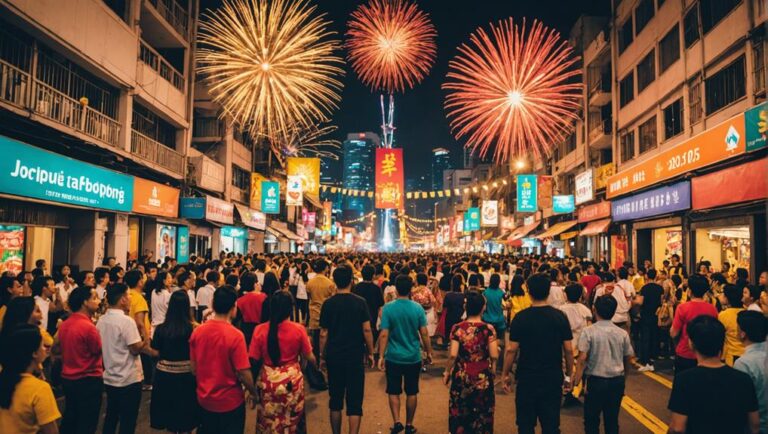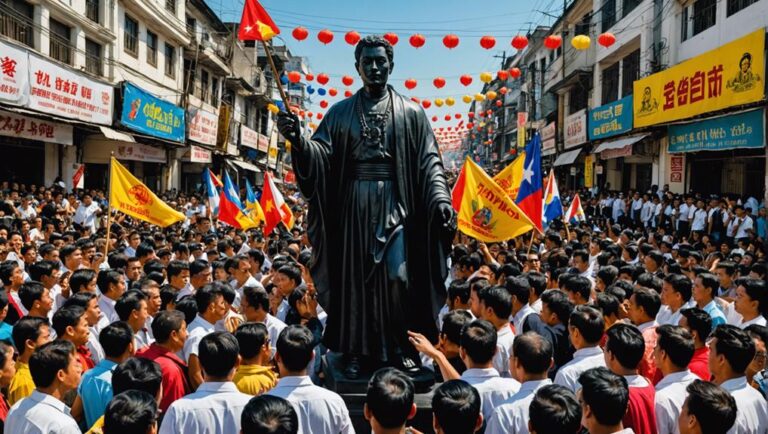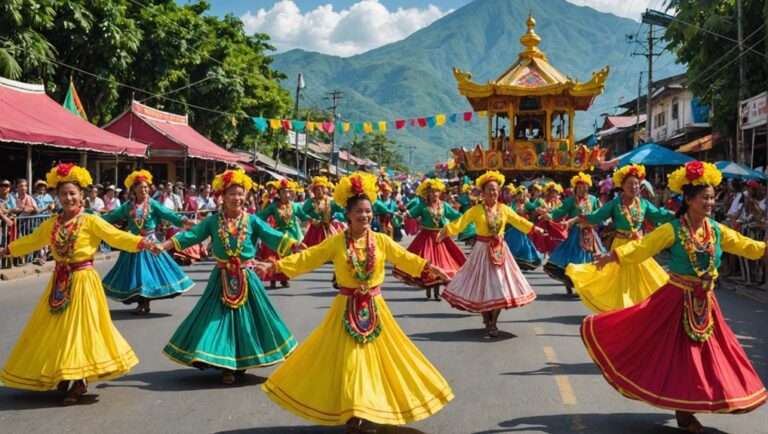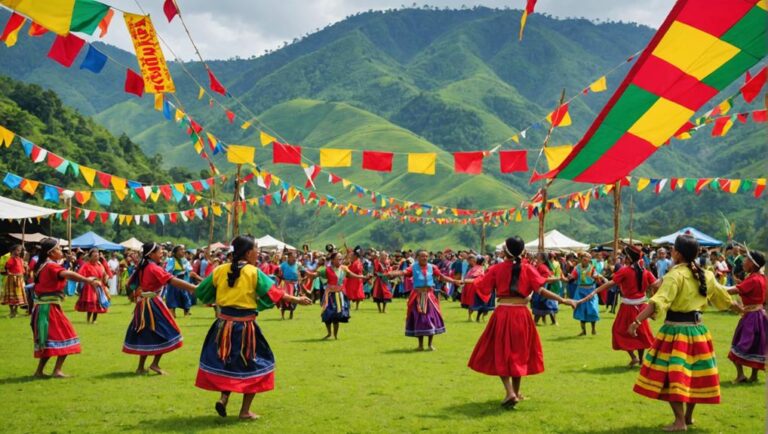Pili Festival: Celebrating Heritage and Community
The Pili Festival represents a convergence of agricultural heritage, Catholic spirituality, and communal identity in Sorsogon, Philippines. Established in 2000 to elevate pili cultivation as a high-value crop, the festival has evolved into a cultural institution integrating nine-day novenas, street parades, and trade fairs.
Through sports competitions and outreach programs, residents reinforce collective bonds while celebrating the native tree’s economic and spiritual significance. The festival exemplifies how local communities transform commercial agriculture into meaningful cultural expression, weaving together faith, identity, and livelihood in annual commemoration.
Highlights
- The Pili Festival, inaugurated in 2000, celebrates Sorsogon’s agricultural heritage and strengthens community bonds through shared cultural traditions.
- Pili trees, native to the Philippines, produce valuable seeds and pulp, supporting 1,373 hectares of cultivation in Sorsogon’s economy.
- A nine-day Catholic novena beginning June 20 integrates spiritual faith with agricultural celebration, culminating at St. Peter and Paul Cathedral.
- Community activities including sports competitions, street dancing, parades, and trade fairs foster local pride and regional economic development throughout June.
- The festival’s ceremonial pagtilad by municipal leadership establishes frameworks for collective participation, reinforcing pili’s importance to local identity and commerce.
The Origins and Evolution of Pili Festival
Conceived in 1999 by Irma Alindogan-Jacobs, the Pili Festival emerged from a deliberate effort to elevate pili from a locally abundant resource to a recognized high-value crop capable of driving economic development in Sorsogon.
Inaugurated in 2000 under Mayor Sally Lee, the festival catalyzed community unification by channeling collective identity around shared agricultural heritage.
Its tradition evolution accelerated when the Department of Tourism designated it an official Philippine festival, legitimizing local pride.
Subsequent mayoral support solidified institutional backing, transforming an economic initiative into a cultural institution that annually reaffirms communal bonds while celebrating the region’s distinctive botanical legacy and economic potential.
Understanding Pili: The Fruit Behind the Celebration
While the Pili Festival emerged as an institutional response to economic opportunity, its cultural significance derives from the botanical particularity of pili itself—a native Philippine tree whose material properties and regional cultivation patterns have shaped local identity and livelihood practices.
The pili tree, reaching heights of twenty meters, produces valuable seeds and pulp with substantial nut culinary applications. Sorsogon’s 1,373 hectares of cultivation underscore the crop’s economic importance.
Pili benefits extend across multiple domains:
- High-value commercial crop supporting regional economies
- Versatile nut culinary ingredient in traditional dishes
- Sustainable agricultural practice for Bicol communities
- Cultural marker of provincial heritage and identity
- Environmental contribution through extensive tree cultivation
This botanical foundation grounds the festival’s communal significance.
Spiritual Significance and Religious Traditions
Beyond its agricultural and economic dimensions, the Pili Festival functions as a sacred observance rooted in the Catholic liturgical calendar and the veneration of Sts. Peter and Paul.
The festival integrates spiritual rituals through a nine-day novena commencing June 20, culminating in a pontifical mass on June 29. The St. Peter and Paul Cathedral, elevated to diocesan seat status in 1951, anchors these community blessings.
This religious framework transforms the celebration beyond commercial enterprise into a spiritual practice, reinforcing collective Catholic identity while honoring patron saints.
The interweaving of sacred observance with local harvest traditions reflects the community’s deep cultural integration of faith and agricultural heritage.
Festival Highlights and Community Activities
The Pili Festival’s secular programming transforms the celebration into an extensive community event that extends throughout June, engaging residents and visitors through diverse participatory activities.
Community involvement manifests through:
- Sports competitions fostering local pride and athletic engagement
- Cultural showcases featuring street dancing and parades celebrating regional identity
- Trade fairs promoting pili-based products and economic development
- Talent competitions and cook fests highlighting culinary traditions
- Outreach programs strengthening neighborhood bonds
The ceremonial pagtilad by municipal leadership initiates festivities, establishing participatory frameworks.
These activities underscore how Sorsogon’s residents transform agricultural celebration into collective cultural expression, reinforcing communal identity while advancing commercial interests in pili production and regional tourism.






